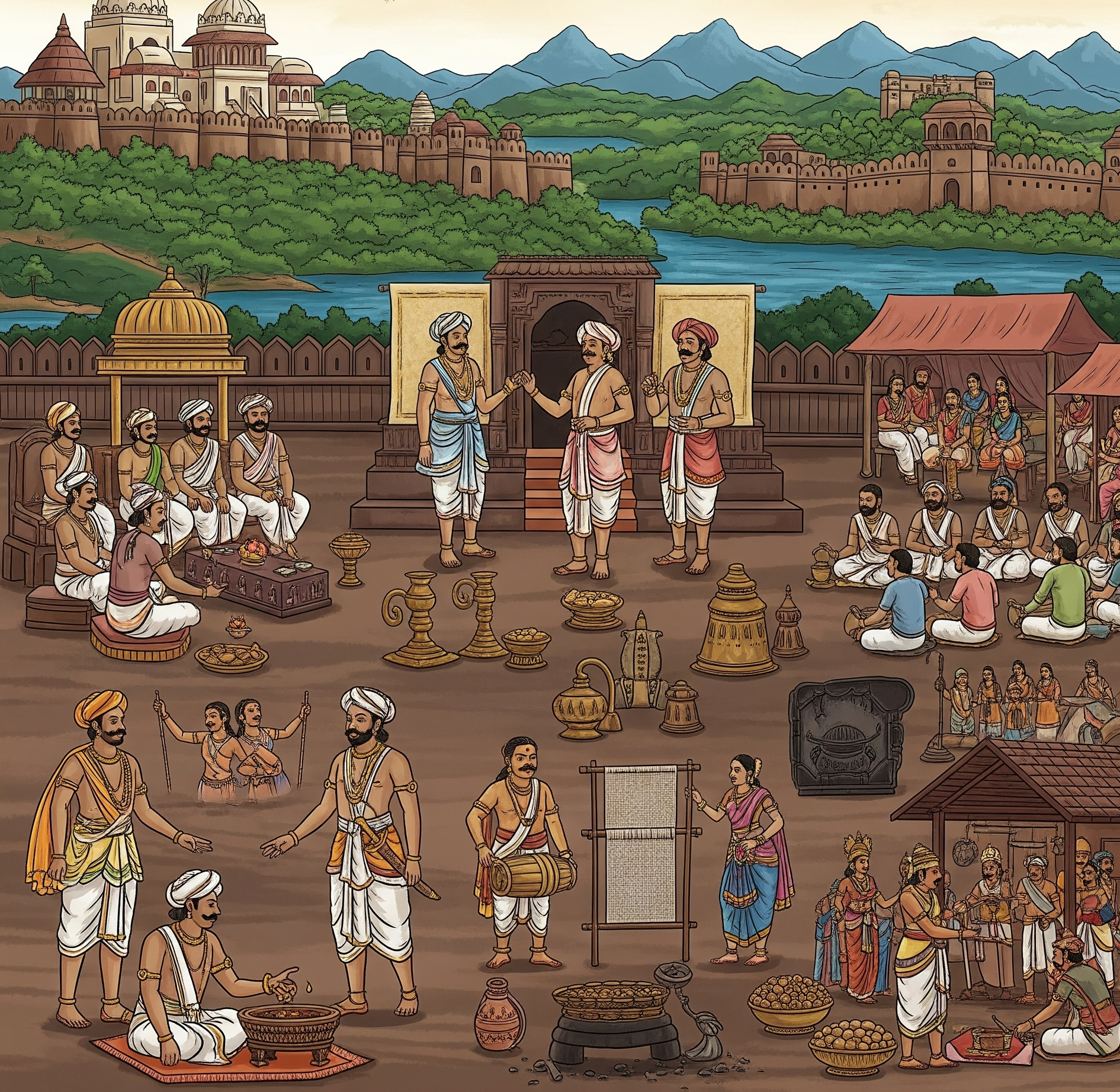
Rulers and Stories of Palakkad: A Tapestry of Power, Culture and Legend
Palakkad, known as the granary of Kerala, is a land where history, legends, and power come together. Its fertile fields and key location attracted many rulers, and the stories they left behind still fascinate and inspire today.
Ancient Beginnings and Early Dynasties
The earliest known rulers of Palakkad were linked to the Chera Empire. Ancient Tamil texts mention the region as Porainad, ruled by a Pandian king named Subhangi and later revealed in legend to be a woman in disguise. In the 1st century AD, the Perumal dynasty rose to power, followed by various local rulers and chieftains like the Valluvakonathiri, Kollengode Rajas, and Sekhari Varma Rajas.
The Nedumpurayur (Tharoor) Swaroopam and Achans
Historically, Palakkad was divided by the Bharatapuzha River. Kollengode’s Nambiatis ruled the south, while the Palghat Achans ruled the north. The Tharoor family, descended from Shekari Varma, had their original palace near today’s Victoria College and played a key role in the region’s politics. They balanced power between the Zamorins of Calicut and the Cochin Raja to stay independent. Palakkad’s leadership was unique. The Raja, often the eldest male, was mostly a figurehead, while real power rested with a deputy called the Achan. The original eight ruling houses, or edoms, eventually grew to 27, shaped by Kerala’s matrilineal traditions.
Legend of the Tribal Queen and the Founding of a Dynasty
One of Palakkad’s most enduring stories is that of a prince excommunicated for marrying a tribal girl. Supported by the local tribes, he established a new royal line, blending royal wisdom with the courage of the region’s indigenous people a tale that symbolizes Palakkad’s spirit of integration and resilience.
Palakkad’s Strategic Importance and the Age of Invasions
Palakkad’s rich farmland made it important to nearby kingdoms like the Zamorin of Calicut and the Raja of Cochin, who relied on its rice. This caused frequent conflicts and changing alliances. In the 10th century, the Kongu kings invaded but were defeated by a local alliance led by the Nedumporiyar which is a victory still celebrated in Chittur today.
The Mysore Sultans and the British Era
In 1757, threatened by the Zamorin, the Raja of Palakkad turned to Hyder Ali of Mysore for help. Hyder Ali drove out the Zamorin and took control of Palakkad, later passing it to his son, Tipu Sultan. Hyder Ali strengthened the Palakkad Fort, which became a key site during battles between Mysore, the British, and local rulers. After Tipu Sultan’s defeat in the Anglo-Mysore wars, the British took over Palakkad, making it part of the Madras Presidency until Kerala was formed in 1956.
Palakkad’s history is one of resilience and strategic importance. Once under the Chera and Perumal dynasties, it later came under the rule of local families like the Nedumpurayur (Tarur Swaroopam), Palakkad Achans, and the Nambiatis of Kollengode. These rulers skillfully balanced power, forming alliances and rivalries with larger kingdoms like the Zamorin of Calicut and the Raja of Cochin, drawn by Palakkad’s fertile lands and trade routes. The arrival of Hyder Ali and Tipu Sultan of Mysore in the 18th century changed the course of the region, turning Palakkad into a key battleground. After Tipu’s defeat, the British took control, making it part of their Madras Presidency. Though local rule ended, the traditions and stories of these royal families live on. Today, Palakkad’s forts, palaces, and culture reflect a rich past shaped by power, tradition, and a unique heritage.
Citations:
1. https://historicalleys.blogspot.com/2011/02/royalty-of-palghat.html
2. https://beyonder.travel/india/palakkad-kerala-south-india-extraordinary-in-the-ordinary/
3. https://www.hearitage.in/2021/12/palakkad-fort-place-to-remember-mysore.html